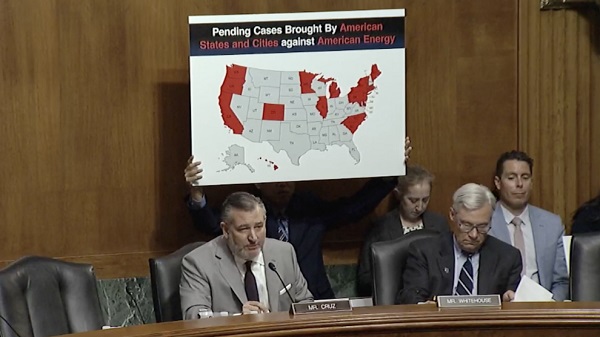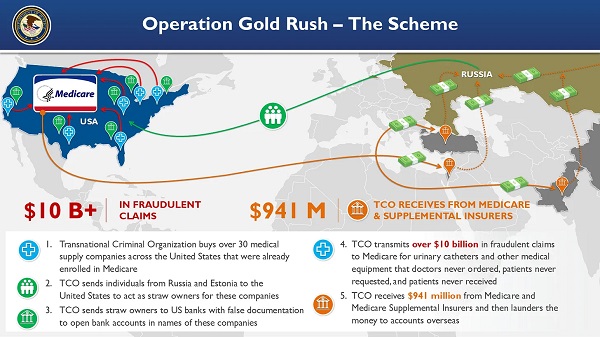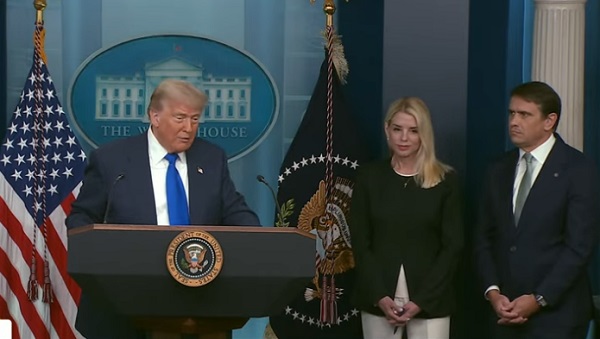Crime
Actor’s Death Raises Alarm about Off-Label Anesthetic

From Heartland Daily News
By ![]() Kevin Stone
Kevin Stone
A federal court has indicted and charged five individuals for contributing to the death of actor Matthew Perry by providing him with the anesthetic ketamine.
On October 28, 2023, Perry was found floating face-down in his hot tub. An autopsy later revealed his death had been caused by “acute effects of ketamine.” Perry, a star of the television show Friends, had long struggled with addiction.
Charged in the 18-count indictment are Perry’s personal assistant, Kenneth Iwamasa; two doctors, Salvador Plasencia and Mark Chavez; and two other individuals, Erik Fleming and Jasveen Sangha. Sangha was known as the “Ketamine Queen” who is accused of running a North Hollywood “stash house.”
Multiple Players Charged
Documents filed by prosecutors claim Perry’s assistant and an acquaintance worked with the two doctors and the drug dealer to provide tens of thousands of dollars worth of ketamine to fuel Perry’s addiction. Fleming coordinated the sale with Sangha, prosecutors say.
Iwamasa provided at least 27 ketamine injections to Perry in the five days leading up to his death, according to the prosecution. Chavez admitted selling ketamine to Plasencia for redistribution to Perry by falsifying information to a distributor and then using a prescription written in the name of a former patient.
When Plasencia texted another doctor about how much to charge Perry for the ketamine, he wrote, “I wonder how much this moron will pay,” and “Let’s find out,” prosecutors say. The trial date for Chavez and Plasencia is set for March 4, 2025.
Binge-Use Temptation
Ketamine is a dissociative anesthetic that can produce hallucinogenic effects. Ketamine is also used as a pain reliever and for the relief of treatment-resistant depression.
Some people use ketamine as a recreational drug for its ability to induce hallucinations. The effects of ketamine are short-lived, and users may rapidly develop tolerance to the drug, leading some to binge-use it.
Celebrity Power, Vulnerability
Ketamine is widely accepted as safe and effective for use as an anesthetic in a clinical setting. Off-label uses of the drug that may lead to abuse have led to rising concerns.
A recent New York Times article questioned the drug’s safety for off-label use in the wake of Perry’s death. Although ketamine ordinarily carries no more risk than other anesthetics, pain relievers, and antidepressants.
Celebrities can use their fame and wealth to circumvent effective safeguards against over-prescription and abuse, says Devon Herrick, a health economist.
“Physicians have significant leeway to prescribe FDA-approved medications off-label,” said Herrick. “Some off-label therapies later become mainstream, while others fall out of favor. What makes Matthew Perry’s situation unique was his celebrity status. Similar to the experience of Michael Jackson, Perry was able to enlist the help of physicians willing to provide him with a risky drug therapy not appropriately monitored.
“It’s unlikely a noncelebrity patient would be able to find a doctor willing to administer an anesthetic in their home,” said Herrick. “The lure of both money and bragging rights to say they’re a celebrity doctor likely culminated in Perry’s demise.”
Off-Label Benefits
Ketamine was developed as an anesthetic agent and was found to help treat some mental health conditions through off-label use, which is a common procedure, says Jeffrey Singer, a senior fellow at the Cato Institute who defends off-label use of the drug.
“Roughly 20 percent of all drugs prescribed in the U.S. are for off-label uses,” said Singer. “The [Food and Drug Administration, FDA] has always deferred to clinicians and clinical researchers on how to use drugs off-label. Once the FDA approves a drug for a particular indication, it permits clinicians to use it for any other indication where clinicians and clinical researchers believe the drug can be helpful.”
This real-world experience brings important knowledge, says Singer.
“As clinical research and clinical experience continue, such off-label drug use can lead to subsequent therapeutic advances,” said Singer. “However, clinical researchers often discover over time that specific off-label uses do not work. Over time, we should learn a lot more about what conditions ketamine works best for and what are the optimal ways to use it for those conditions.”
The system is working, says Singer.
“There is no reason why the FDA should add to the already cumbersome regulatory regime by requiring further approvals for off-label uses,” said Singer. “The FDA should leave the off-label uses of drugs to clinical researchers, clinicians, and the civil tort system.”
Black Market Problem
Adding new legal barriers to ketamine prescription would probably drive those wishing to abuse the drug into the black market, where its use would be wholly unmonitored and more dangerous drugs are also readily available, says Singer.
“People are already getting ketamine in the black market, along with other psychedelics such as MDMA, psilocybin, DMT, and magic mushrooms,” said Singer. “If the FDA further restricted online sales [of ketamine], it would only intensify profits in the black market and drive people to the black market, where the purity and strength of these drugs are less certain.
“We already have seen reports of black market MDMA—“ecstasy” or “Molly”—being laced with fentanyl,” said Singer. “Further restricting online sales of ketamine—or limiting its off-label use by licensed clinicians—will only make it more dangerous for people who continue to use ketamine. But it will not prevent them from using it.”
Kevin Stone ([email protected]) writes from Arlington, Texas.
Crime
The Left Thinks Drug Criminalization Is Racist. Minorities Disagree

[This article was originally published in City Journal, a public policy magazine and website published by the Manhattan Institute for Policy Research]
By Adam Zivo
A Canadian poll finds that racial minorities don’t believe drug enforcement is bigoted.
Is drug prohibition racist? Many left-wing institutions seem to think so. But their argument is historically illiterate—and it contradicts recent polling data, too, which show that minorities overwhelmingly reject that view.
Policies and laws are tools to establish order. Like any tool, they can be abused. The first drug laws in North America, dating back to the late nineteenth and early twentieth centuries, arguably fixated on opium as a legal pretext to harass Asian immigrants, for example. But no reasonable person would argue that laws against home invasion, murder, or theft are “racist” because they have been misapplied in past cases. Absent supporting evidence, leaping from “this tool is sometimes used in racist ways” to “this tool is essentially racist” is kindergarten-level reasoning.
Yet this is precisely what institutions and activist groups throughout the Western world have done. The Drug Policy Alliance, a U.S.-based organization, suggests that drug prohibition is rooted in “racism and fear.” Harm Reduction International, a British NGO, argues for legalization on the grounds that drug prohibition entrenches “racialized hierarchies, which were established under colonial control and continue to dominate today.” In Canada, where I live, the top public health official in British Columbia, our most drug-permissive province, released a pro-legalization report last summer claiming that prohibition is “based on a history of racism, white supremacy, paternalism, colonialism, classism and human rights violations.”
These claims ignore how drug prohibition has been and remains popular in many non-European societies. Sharia law has banned the use of mind-altering substances since the seventh century. When Indigenous leaders negotiated treaties with Canadian colonists in the late 1800s, they asked for “the exclusion of fire water (whiskey)” from their communities. That same century, China’s Qing Empire banned opium amid a national addiction crisis. “Opium is a poison, undermining our good customs and morality,” the Daoguang emperor wrote in an 1810 edict.
Today, Asian and Muslim jurisdictions impose much stiffer penalties on drug offenders than do Western nations. In countries like China, Saudi Arabia, Iran, Singapore, and Thailand, addicts and traffickers are given lengthy prison sentences or executed. Meantime, in Canada and the United States, de facto decriminalization has left urban cores littered with syringes and shrouded in clouds of meth.
The anti-drug backlash building in North America appears to be spearheaded by racial minorities. When Chesa Boudin, San Francisco’s former district attorney, was recalled in 2022, support for his ouster was highest among Asian voters. Last fall, 73 percent of Latinos backed California’s Proposition 36, which heightened penalties for drug crimes, while only 58 percent of white respondents did.
In Canada, the first signs of a parallel trend emerged during Vancouver’s 2022 municipal election, where an apparent surge in Chinese Canadian support helped install a slate of pro-police candidates. Then, in British Columbia’s provincial election last autumn, nonwhite voters strongly preferred the BC Conservatives, who campaigned on stricter drug laws. And in last month’s federal election, within both Vancouver and Toronto’s metropolitan areas, tough-on-crime conservatives received considerable support from South Asian communities.
These are all strong indicators that racial minorities do not, in fact, universally favor drug legalization. But their small population share means there is relatively little polling data to measure their preferences. Since only 7.6 percent of Americans are Asian, for example, a poll of 1,000 randomly selected people will yield an average of only 76 Asian respondents—too small a sample from which to draw meaningful conclusions. You can overcome this barrier by commissioning very large polls, but that’s expensive.
Nonetheless, last autumn, the Centre for Responsible Drug Policy (a nonprofit I founded and operate) did just that. In partnership with the Macdonald-Laurier Institute, we contracted Mainstreet Research to ask over 12,000 British Columbians: “Do you agree or disagree that criminalizing drugs is racist?”
The results undermine progressives’ assumptions. Only 26 percent of nonwhite respondents agreed (either strongly or weakly) that drug criminalization is racist, while over twice as many (56 percent) disagreed. The share of nonwhite respondents who strongly disagreed was three times larger than the share that strongly agreed (43.2 percent versus 14.3 percent). These results are fairly conclusive for this jurisdiction, given the poll’s sample size of 2,233 nonwhite respondents and a margin of error of 2 percent.
Notably, Indigenous respondents seemed to be the most anti-drug ethnic group: only 20 percent agreed (weakly or strongly) with the “criminalization is racist” narrative, while 61 percent disagreed. Once again, those who disagreed were much more vehement than those who agreed. With a sample size of 399 respondents, the margin of error here (5 percent) is too small to confound these dramatic results.
We saw similar outcomes for other minority groups, such as South Asians, Southeast Asians, Latinos, and blacks. While Middle Eastern respondents also seemed to follow this trend, the poll included too few of them to draw definitive conclusions. Only East Asians were divided on the issue, though a clear majority still disagreed that criminalization is racist.
As this poll was limited to British Columbian respondents, our findings cannot necessarily be assumed to hold throughout Canada and the United States. But since the province is arguably the most drug-permissive jurisdiction within the two countries, these results could represent the ceiling of pro-drug, anti-criminalization attitudes among minority communities.
Legalization proponents and their progressive allies take pride in being “anti-racist.” Our polling, however, suggests that they are not listening to the communities they profess to care about.
The Bureau is a reader-supported publication.
To receive new posts and support my work, consider becoming a free or paid subscriber.
Invite your friends and earn rewards
Crime
Project Sleeping Giant: Inside the Chinese Mercantile Machine Linking Beijing’s Underground Banks and the Sinaloa Cartel

U.S. surveillance image shows one of Sai Zhang’s top lieutenants crossing into Mexico with a money courier for the Sinaloa cartel. The photo revealed critical ties between Zhang’s transnational money laundering and drug trafficking operation and one of North America’s dominant fentanyl distributors.
 Sam Cooper
Sam Cooper
Former senior DEA official describes covert global financial ecosystem tying Chinese students, Sinaloa fentanyl sales, cartel cash collection, and PRC state-linked infrastructure deals.
In January 2021, a grainy black-and-white surveillance photo quietly accelerated one of the most consequential geopolitical investigations in recent times — a case with influence over border security, trade policy, and tariff disputes shaping our era.
Captured at the U.S.-Mexico border, the image showed a thick-set Chinese man wearing a COVID-era face mask driving alongside a Mexican man — a key money launderer for the Sinaloa cartel. The Chinese man turned out to be a senior operative working for Sai Zhang, a younger Chinese international student living in the United States on a student visa.
To a small group of U.S. federal agents, the photo revealed a thread they had been painstakingly unraveling since 2018, part of an ongoing investigation known as Project Sleeping Giant.
The overarching task force, launched by senior DEA agent Don Im — whose career was built on decoding China’s paramount role in global money laundering and supply of chemicals used to produce methamphetamine and fentanyl — aimed to bring cases against Latin cartels working with Chinese money launderers.
This photo was the first concrete step toward proving a direct, operational bridge between Chinese underground banking networks and the blood-soaked heart of Mexico’s most notorious cartel.
While evidence of Sai Zhang’s commanding role in orchestrating Sinaloa fentanyl cash flows was stunning, the involvement of Chinese student networks followed its own curious logic, Im explained in an interview.
“Chinese banking networks were operating in the U.S. long before Zhang linked up with the Sinaloa cartel,” Im said, describing the system in which Chinese buyers bid on pools of drug cash collected in cities worldwide, paying a premium to receive laundered dollars in American locations and investments of their choosing. “The buyers were mostly wealthy Chinese seeking dollars for real estate or tuition in America. Payments were made in yuan through Chinese accounts. In return, Mexican cartels received goods or cash.”
In exclusive interviews, Im revealed in unprecedented details the breathtaking complexity of China’s global drug money laundering networks — a system of Byzantine paths that Sleeping Giant helped map and penetrate. The troubling implications help explain why Washington is now imposing trade sanctions targeting China and countries deeply entwined with its export-driven economy.
At the heart of it, Beijing’s centralized economic apparatus and the Chinese Communist Party’s regional governors knowingly align with global drug barons — channeling fentanyl cash, reintegrating it into China’s factory output, and exporting drug-funded “legitimate” goods worldwide. Meanwhile, Chinese immigrants and travelers access the other side of this narco-banking system, using it to bankroll overseas investments and strengthen the reach of the Chinese diaspora.
It is a system that works for China’s government and citizens alike — on the micro level, it pays for tuition and housing for Chinese students in America; on the macro level, it helps fund Xi Jinping’s Belt and Road infrastructure projects abroad, designed to bind other states more closely to China through trade, debt, and ultimately elite corruption. According to Im, the chemical precursors fueling the production of fentanyl, methamphetamine, and ecstasy in parts of Europe — as well as in countries like Canada and Mexico — are woven into this Belt and Road system.
“Their Belt and Road Initiative is now in over a hundred-and-some-odd countries — with ports, airports, shipping lanes, roads, highways, trains. And all of China’s precursor chemicals are being offloaded,” Im said. “Right now, China’s economy is in dire straits, and they’re looking for capital to pay off debt, fund projects, make investments, or transfer wealth out of China. And that’s huge business. It involves provincial authorities engaged in various organized crime activities, including bribery, intimidation, kickbacks, and providing tariff breaks to known illicit drug and chemical suppliers.”
Don Im has testified on these findings before Congress, and related U.S. government investigations have shown that Beijing provides tax incentives to fentanyl factories.
As Sleeping Giant revealed, a critical cog in Beijing’s Trojan horse system is the Chinese student visitor — exemplified by figures like Sai Zhang.
The Bureau is a reader-supported publication.
To receive new posts and support my work, consider becoming a free or paid subscriber.
The Student Banker
Sai Zhang arrived in the United States on a student visa. By the late 2010s, he had quietly transformed himself into a key broker in a vast underground banking network centered in Southern California. His customers were wealthy Chinese nationals circumventing Beijing’s strict $50,000 annual foreign exchange cap.
Zhang’s operation was deceptively elegant. He tapped into the surplus of U.S. dollars held by Mexican drug cartels from opioid-ravaged eastern states such as North Carolina to cartel-influenced streets in Los Angeles. The Sinaloa drug barons, flush with cash from fentanyl, meth, and cocaine sales, needed a discreet and cost-effective way to convert their U.S. dollar profits back into pesos in Mexico.
Zhang’s network — as is true for all Chinese money brokers — clipped both sides of the ticket, offering direct or indirect services to Mexican cartels, Chinese factory producers, Chinese diaspora retailers across Europe and the western hemisphere who sell Chinese goods, and Chinese citizens seeking to import their yuan-denominated wealth, receiving non-traditional banking payouts in American cities.
So Zhang bought the Sinaloa cartel’s fentanyl cash dollars at a discount, resold them at a premium to Chinese buyers, and closed a loop that turned violent, street-level drug cash into fuel for China’s GDP.
But for U.S. prosecutors working alongside DEA street teams, what had long been known by detectives since the landmark case of Mexican-Chinese methamphetamine baron Zhenli Ye Gon—that is, the deep integration between Chinese and Mexican narco networks—still had to be painstakingly proven in court.
For Sai Zhang, this meant cutting through a labyrinth of protective layers carefully constructed to shield elite money brokers from exposure.
As described in voluminous U.S. court records—and corroborated in detail by Don Im—Zhang relied on a sophisticated chain of cash couriers, brokers, and money mules to keep himself insulated from street-level narcotics transactions. DEA surveillance teams tracked network operators to numerous cash stash houses and clandestine parking lot exchanges, often coming tantalizingly close yet narrowly missing opportunities to link Zhang’s cash directly to drug shipments.
One example is detailed in the affidavit of lead investigator Steven Gonzales. Surveillance teams tracked Xuanyi Mu and Hang Su from the “Naomi Avenue” stash house in Arcadia to a parking lot, where they met Elizabeth Sevilla-Mendoza, a known narcotics courier. Su collected an orange tote bag from her before returning to her black Mercedes-Benz. Officers then directed a traffic stop and deployed a K-9 unit, which alerted to the scent of narcotics on the bag. Inside, agents discovered $34,000 in foil-wrapped cash, neatly stacked and bound with rubber bands.
But within 48 hours of seizing this cash, Zhang’s team shut down the Arcadia stash house, leaving DEA investigators without the drug seizure they needed and cutting off a valuable surveillance node.
The first major break came on October 18, 2022. Acting on a tip from DEA agents in Charlotte, North Carolina, investigators in California zeroed in on a supermarket parking lot in San Gabriel. A wiretap on a Chinese suspected narco in North Carolina named “Mimi” indicated that Sai Zhang had arranged to pick up a $300,000 drug cash payment outside the San Gabriel grocery. Hours later officers watched as a woman in a sleek blue Maserati leaned out and took a black bag — containing about $300,000 in cash — from the driver of a white Ram truck, a Hispanic man.
Gonzalez was well prepared, having spent months quietly briefing local police departments across Los Angeles County on the finely honed clockwork of the Chinese student’s network.
When the DEA called for backup, San Gabriel police launched. They tailed the big Ram truck for hours, weaving through LA’s dense murk until the truck finally stopped in a Compton parking lot. There, the driver transferred two boxes from a silver sedan into his truck. Moments later, officers swooped in, seizing 50 kilos of cocaine — concrete proof that the Chinese money trail led directly to narcotics.
Meanwhile, Steven Gonzalez, DEA’s lead detective, shadowed the blue Maserati east, far from Compton’s industrial edges, finally arriving in Temple City — a quiet suburban enclave in the western San Gabriel Valley, known for its large Chinese community and discreet residential streets. There, a person emerged with a bag and passed it to two women waiting in a car. When officers stopped her car, they found $25,000 in cash — dollars procured through Sai Zhang’s underground WeChat-based cash exchange.
The DEA team ultimately traced the white Ram truck — along with the same silver sedan that had delivered 50 kilos of cocaine to the Ram’s driver — back to a drug stash house in Rowland Heights. In December 2022, they intercepted another driver leaving that residence, seizing $500,000 in cash.
The next link in the Chinese-Sinaloa drug money chain closed the circle—from, in a sense, the Chinese student boss, Sai Zhang, down to his foot soldiers: Chinese exchange students in the United States, lured by the promise of easy spending money, and recruited through WeChat message boards to serve as money mules for organized crime.
These same students come from a vast pool of families whose North American tuition payments are themselves financed with laundered drug proceeds, weaving them even more tightly into fentanyl’s financial web.
A cinematic moment came on April 10, 2023. In the evening dusk officers watched a grocery bag of cash drop from a balcony belonging to one of Sai Zhang’s lieutenants. A Chinese man seen nervously pacing the sidewalk waiting for the bag drop scooped it up and drove off in a black Range Rover.
The Range Rover wound through Los Angeles, stopping at another pickup before heading to a quiet house in North Hills. There, the driver handed two bags to a tall young Chinese man — notable for his studious wire-frame glasses — waiting at the door.
Around midnight, officers knocked. An older woman nervously answered and led them to a bedroom. She told the officers she offered boarding to international exchange students. Under the bed, they found two grocery bags stuffed with $60,000 cash. The room belonged to a Chinese high-school student boarding in the home — a ground-level player in a global money chain, perhaps only vaguely aware, if at all, that their willingness to take “easy” money jobs in a parallel Chinese economy is driving overdose deaths and an overdue crackdown by American lawmakers.
In his affidavit, Steven Gonzales boils down the transnational model exposed by Zhang’s case in these terms: One method by which a Chinese businessman might purchase real estate in Los Angeles—while evading China’s strict currency export controls—involves acquiring U.S. dollars through an underground exchange. To do so, the businessman effectively “buys” dollars from a broker like Zhang who supplies drug cash already circulating in the United States.
In this arrangement, the Chinese investor transfers an equivalent amount of Chinese currency into a designated account in China controlled by the Mexican cartel. Once secured, those funds can then be used—legitimately on the surface—to settle debts owed by the cartel to Chinese manufacturers.
“The money in that account in China can legally be used to pay off legitimate debts to Chinese manufacturers who ship goods to Mexico,” U.S. court filings in Zhang’s indictment say.
The goods are shipped to Mexico, the DEA affidavit continues, where they are sold in the local market. The resulting pesos represent the final value of the drugs initially smuggled and sold in the United States, thereby closing the loop on the cartel’s illicit earnings and providing the Chinese investor with clean dollars to invest in U.S. assets.
Through this intricate scheme, the Chinese businessman successfully acquires the dollars needed to finance his Los Angeles property, while the Mexican traffickers are reimbursed for their American drug revenues.
Gonzales says that this scheme, known as trade-based money laundering, exploits legitimate international trade flows to conceal the movement of criminal proceeds—allowing transnational crime networks to move drugs across borders and launder and reintegrate illicit gains under the appearance of lawful commerce.
Invite your friends and earn rewards
The Belt and Road Driver: Don Im’s Analysis
For Don Im, the story of Zhang is far from new — just another chapter in a book he knows better than almost anyone. “We saw this going back to 2007, during the Zhenli Ye Gon era,” Im said. “It’s a bidding war. Whoever offers the highest price gets the drug dollars from North America and Europe.”
After listening to Don Im in hours of taped interviews, a metaphor suggests itself. China’s grip on the global economy — its underground and aboveground systems at work — is unimaginably complex. Black and white appear divided, but in fact are not. Like an Escher image maze, cash flows up, down, sideways — enters, exits, integrates, vanishes, reappears, reiterates. No exit, no end. A labyrinth of lies.
For this deep-dive story — to help explain the consequences to Western lawmakers, business leaders, and citizens affected by the fentanyl death crisis — Don Im provided sensitive details illustrating the scale and depth of money laundering and financial integration stemming from this narco economy.
“So you’re not seeing a direct, linear transfer of drug proceeds directly into China. You’ll see bulk cash being shipped. You’ll see money that’s placed and laundered within Canada or in the United States through local businesses. Then those funds are pulled into other accounts or investment vehicles—cryptocurrency, other so-called high-value assets, businesses, brick-and-mortar companies. And then they’re all sold again—homes as well.
And what’s that done? It’s offset with transfers of commodities that are equivalent to the millions of dollars or euros that are shipped from various companies in Guangzhou, where now you have, in those regions, thousands of Mexicans, Panamanians, and Colombians living and operating as their own diaspora with those Chinese manufacturing companies. Those companies are receiving orders from the Chinese businessmen in Mexico, Canada, Panama, Vancouver—requesting shipments of textiles, clothing, electronics, everyday products that the Chinese manufacture and we buy here and throughout the world.
And those are all equivalent to the amount of drug proceeds that the Chinese businessmen are buying in drug consumer countries. When I say North American consumer nations, I include Canada. Vancouver probably has the highest per capita overdose death rate in the world—the policy is insane there. So it’s essentially an indirect, asymmetric transfer of funds and value that has no direct correlation with, or link to, the drug proceeds that are generated off the streets—the heroin, the cocaine, the fentanyl, the marijuana, the methamphetamine.”
“They’ll deposit it into businesses and restaurants, and they’ll deposit those funds commingled with the legitimate funds they generate daily from restaurants, gas stations, convenience stores. And those will be deposited into numerous banks. Then the real drug proceeds—the profits—are transferred into a number of core accounts and pooled there. At that point, the owner in Mexico, Colombia, or Panama will decide where to send the money—to other accounts he controls.
Then he’ll go on WeChat and essentially enter one of those rooms—an auction for dollars. He’ll say, “Hey, listen, I’ve got a million in Vancouver, a million in New York, a million in Chicago—who wants to buy these?” And then you have Chinese citizens in China who are looking for dollars… to get their wealth out, or to pay off debt, or to get their kids into school elsewhere, or even to buy U.S. or Western products to ship into China. So they’ll bid—and they’ll pay a premium. Because what they’re doing is getting instructions to buy, say, a million dollars’ worth of commodities valued in Mexico, but in China it’s worth $800,000.”
Then the next time the cartel guy comes in and says, “Hey, I’ve got a million euros in Milan, Italy,” guess what? The Chinese businessman has the pesos to transfer to the cartel. So the Chinese businessman will pay $1.1 million—or a million dollars’ worth of renminbi or yuan—to ship internally in China to the manufacturing companies for all the commodities to be shipped to Mexico.
And once that’s shipped and the Chinese-Mexican businessman is satisfied with what he got, then he’ll say, “Okay, what do you want to do with the money in New York City?”
The Chinese businessman goes, “I want to look at a bunch of properties. I want you to send $200-some-thousand to New York University under the name of my son or nephew or niece.”
For those who might believe that China’s leaders are unaware of the global WeChat cash brokerage system — and its direct inputs into the Chinese factories powering Beijing’s mercantilist economy — Don Im offers a sobering set of facts.
“I brought it all together because I was running DEA’s money laundering operations at Special Operations Division, supporting undercover ops across the agency. DEA agents and analysts going back to the 2000’s tracked Mexicans and Colombians selling dollars to Chinese buyers. And they shared evidence with China law enforcement in circa 2012-2014.”
Im described even traveling to Beijing himself to brief the Ministry of Public Security.
“I personally went to Beijing in 2017, briefed top Ministry of Public Security officials. They listened when I explained how Chinese citizens use WeChat to buy drug dollars and then pay manufacturers in China to ship goods to brokers in Mexico. That was how the exchange happened.”
The Bureau is a reader-supported publication.
To receive new posts and support my work, consider becoming a free or paid subscriber.
The Most Powerful People in the World
On June 26, leading Mexican cartel reporter Ioan Grillo posted this message to X: ‘You follow drugs, you get drug addicts and drug dealers. But you start to follow the money, and you don’t know where the f—k it’s gonna take you’ — from The Wire,” Grillo explained, “but also relevant to the historic orders by the U.S. Treasury against three Mexican banks, issued yesterday.”
Under the leadership of Treasury Secretary Scott Bessent, the U.S. formally sanctioned CIBanco, Intercam Banco, and Vector Casa de Bolsa on June 25, designating them “financial institutions of primary money-laundering concern.” The move effectively cuts these banks off from the U.S. financial system, citing their roles in laundering millions of dollars on behalf of Mexico’s most powerful cartels and facilitating payments for fentanyl precursor chemicals imported from China. The designations mark the first major use of new powers under the Fentanyl Sanctions Act.
For Don Im, this kind of action is long overdue — and, in his view, could probably go much farther and higher, into very discomforting areas for some world leaders.
A file called “Operation Heart of Stone” is illustrative. Im says he designed and ran this U.S. undercover operation targeting Horacio Cartes, Paraguay’s former president, who was accused of deep involvement in drug trafficking and money laundering. A 2010 U.S. State Department cable — leaked by WikiLeaks and derailing Heart of Stone’s momentum — labeled Cartes as the head of a major drug trafficking and laundering network. But, as Im points out, “we still got HSBC and hit them with a $1.9 billion fine.”
Speaking about this case and his decades spent infiltrating the world’s most dangerous criminal and financial networks, Im offered a set of opinions that — while carefully worded — amount to a kind of manifesto on who should be held accountable for opioid death tolls, and how to confront the system enabling them.
“Throughout the 1980s and 1990s, the DEA and US Customs (HSI) and IRS, had conducted numerous undercover money laundering operations against the drug cartels. Massive cash generated on the streets of North America and Europe were being deposited into thousands of banks,” Im said. “As a result, numerous anti-money laundering legislation efforts were implemented costing banks billions of dollars in compliance. At the same time, DEA, IRS and US Customs agents, established these money laundering operations by posing as money launderers and bankers to infiltrate the drug cartels.”
“These operations allowed law enforcement a door into the global underground banking system,” he continued. “DEA, USCS, IRS agents were able to track drug proceeds into the murky world where dirty cash was being cleaned by a global network of banks, businesses, law firms, NGO’s, corporations, offshore havens, philanthropic organizations, and reappearing into the accounts of corrupt government and politicians, millionaires and billionaires and their families.”
According to Im, it was DEA operations such as Swordfish, Pisces, Green Ice, Polar Cap, Casablanca, as well as Heart of Stone, Titan, and Green Treasure, that helped law enforcement capture evidence and intelligence into how the global system operates — with Sleeping Giant and Sai Zhang’s Chinese student and Sinaloa Cartel nexus being the latest sweeping case proving Im’s point.
“These investigations and similar investigations, led DEA to better understand how Chinese Money Laundering Organizations were leveraging trade, commerce, banking, technology and corruption to create a system of global bartering and unofficial banking,” Im said. “By using money to lure bad guys, and following the money upstream, DEA was able to seize billions of dollars of drug cash, seize and forfeit billions of dollars in assets purchased with drug proceeds, and even fine major banks such as Bank of America, Citibank, HSBC, Standard Charter, TD Bank, Wells Fargo, and many more. However, less than a handful of bank executives have ever been indicted and sent to prison.
Even with evidence, bankers, lawyers, accountants and politicians skirted prison sentences, while the low-hanging fruit drug traffickers were indicted and arrested. The judicial system is discriminatory when it comes to wealth, status and political convenience.”
The Bureau is a reader-supported publication.
To receive new posts and support my work, consider becoming a free or paid subscriber.
Invite your friends and earn rewards
-

 Alberta1 day ago
Alberta1 day agoCOVID mandates protester in Canada released on bail after over 2 years in jail
-

 armed forces1 day ago
armed forces1 day agoCanada’s Military Can’t Be Fixed With Cash Alone
-
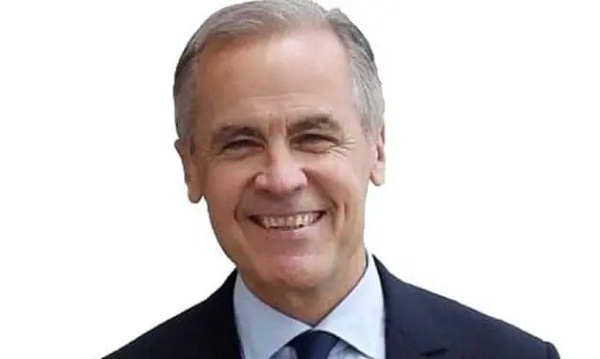
 Business1 day ago
Business1 day agoCarney’s spending makes Trudeau look like a cheapskate
-

 Business1 day ago
Business1 day agoCanada’s loyalty to globalism is bleeding our economy dry
-
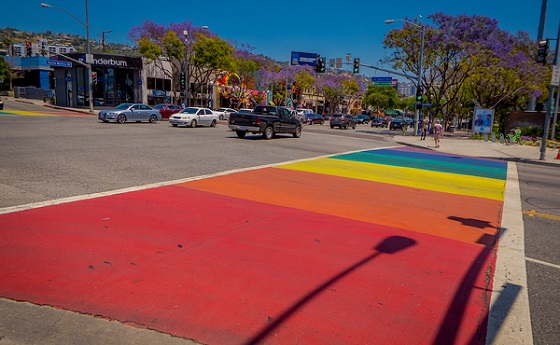
 International1 day ago
International1 day agoTrump transportation secretary tells governors to remove ‘rainbow crosswalks’
-

 Alberta1 day ago
Alberta1 day agoAlberta Next: Alberta Pension Plan
-

 Crime2 days ago
Crime2 days agoProject Sleeping Giant: Inside the Chinese Mercantile Machine Linking Beijing’s Underground Banks and the Sinaloa Cartel
-

 C2C Journal1 day ago
C2C Journal1 day agoCanada Desperately Needs a Baby Bump




